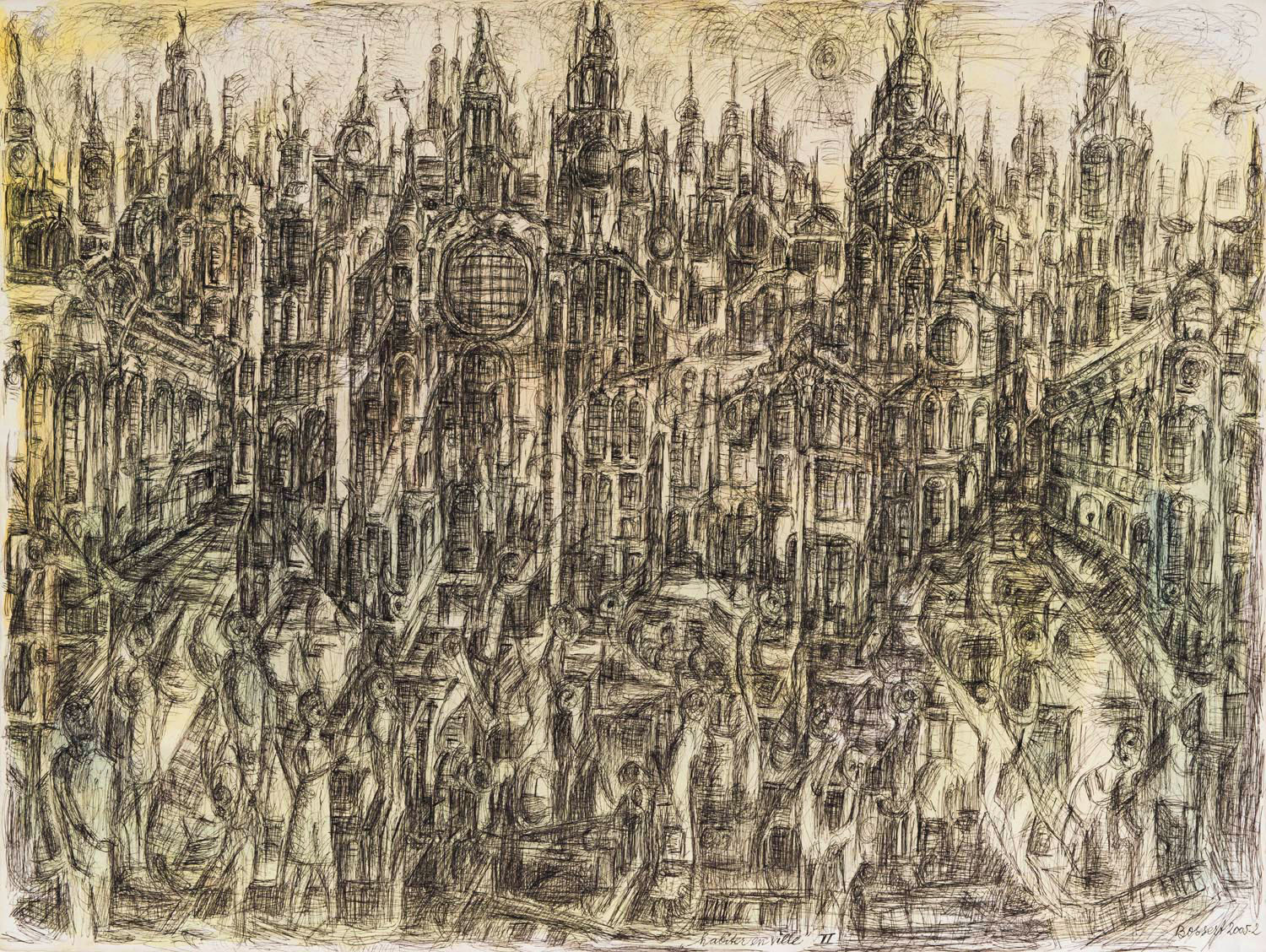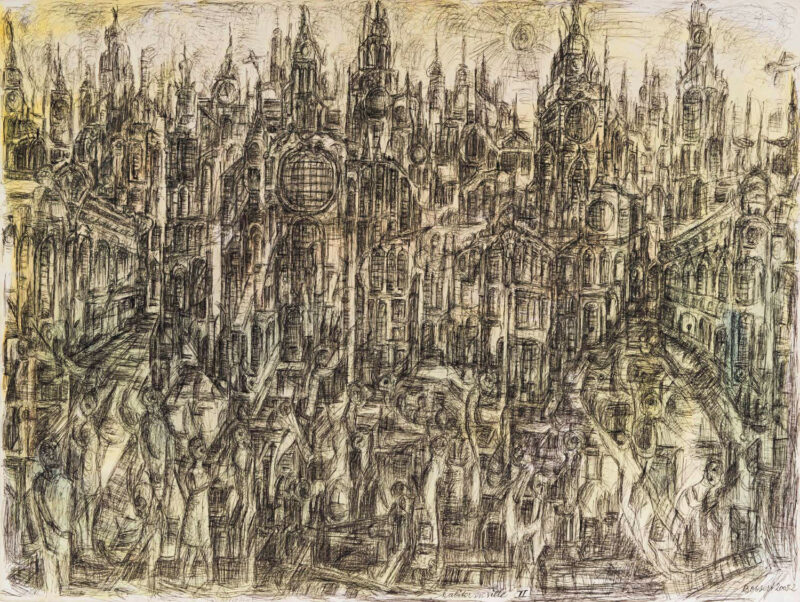Herman Bossert (born in 1940, Amsterdam) has spent his whole adult life on creating art, alongside his work in education. When he took early retirement in 1991, he made painting his main occupation. His early work has been regarded as ‘art singulier’; a French stylistic category situated between outsider art and art brut, because of a certain affinity to Cobra Expressionism. It was not until 2003 that he started drawing; in the first year drawing human figures and a year later revealing an endless fascination with urban architecture. Fine graphic lines, partly against a watercolour background, give rise to cathedral-like structures, town squares full of cars and human silhouettes in an ominous twilight atmosphere. Bossert himself refers to his work as ‘those scribbles’. Two years ago, he cut off part of a drawing that hadn’t quite worked, and this gave him the idea of combining separate pieces, strips and even pages of a small sketchbook into a montage that is reminiscent of tile tableaux from folk art. The eye of the viewer is intrigued and surprised by unexpected transitions. Nowadays, Herman Bossert works systematically towards the montage, by saving cut-out drawings and producing numerous small drawings, which are gathered together at a later stage. In the modest atelier on the first floor of a terraced house in Zaandam, Bossert spends his days cutting, sticking and scribbling, amongst piles of magazines, cuttings and postcards of impressive historical architecture from all over Europe. However, the familiar models serve merely as departure points on the way to the endangered places that Bossert sees ahead of us, beyond our horizons. He died in 2017.

